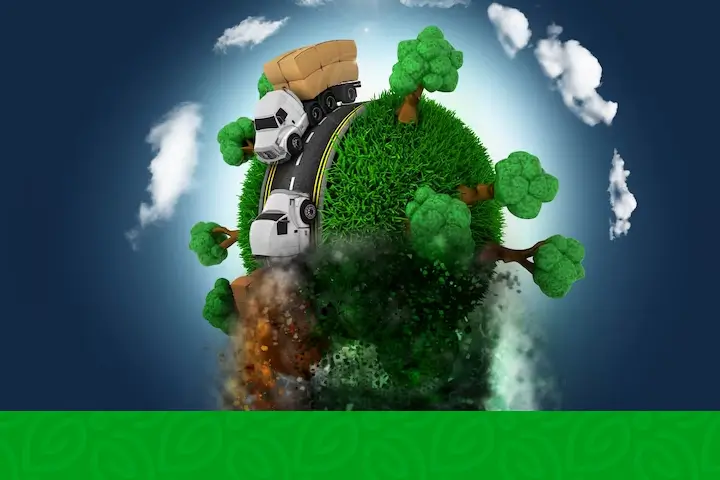
Unmasking an Environmental Challenge: Rice Straw Feed’s Hidden Role in Greenhouse Gas Emissions, as Revealed by the Ministry of Agriculture
In a startling revelation that ripples across the agricultural landscape, the Ministry of Agriculture has sounded a clarion call to farmers: Beware the seemingly innocuous rice straw feed. Unveiling a connection that echoes far beyond the pastures, the ministry’s Head of Climate Change and Livestock Sustainability, Bernard Kimoro, highlighted that this widely used feed is silently contributing to the emission of greenhouse gases.
The Ripple Effect: From Pastures to Atmosphere
During a dynamic roundtable discussion held at the International Livestock Research Institute (ILRI), Kimoro highlighted the uncharted link between rice straw feed and greenhouse gas emissions. He cautioned against the common practice of feeding livestock with rice straw, underscoring its role in escalating emissions.
“Venturing to Mwea for rice straws? You’re inadvertently amplifying emissions,” Kimoro cautioned, shedding light on the unintended environmental consequences of this practice. Instead, he emphasized that allowing rice straws to decompose naturally can foster soil carbon enhancement.
A Growing Concern: Greenhouse Gases and Livestock
While the connection might seem indirect, the science behind it is robust. Flooded rice fields are known to emit methane, a potent greenhouse gas. This is a significant revelation considering that within the realm of livestock, cattle stand as the highest daily emitters on a per-animal basis, trailed by sheep, goats, and buffalos.
Climate Commitment: Kenya’s Struggle and Vision
The magnitude of this revelation resonates profoundly as Kenya grapples with escalating greenhouse gas emissions. Government data reveals a worrisome trajectory, with total emissions surging from 56.8 metric tonnes of carbon dioxide equivalent in 1995 to a staggering 93.7 metric tonnes in 2015. As the nation pursues its Vision 2030 development agenda, projections indicate that emissions could soar to an alarming 143 metric tonnes by 2030.
The Landscape of Emissions: Agriculture’s Role
The mosaic of emissions is intricate, with agriculture claiming a substantial share of the pie. In 2015, agriculture emerged as the leading contributor to emissions at 40%, primarily due to livestock enteric fermentation, manure left on pasture, and agricultural and fertilizer application. It’s a challenge intricately linked with land use changes and forestry at 38% and energy (including transport) at 18%.
A Way Forward: Recommendations and Resilience
Kimoro didn’t just unveil a problem; he presented solutions. The Ministry of Agriculture advocates for the use of grasses that enhance productivity while curbing emissions. The African foxtail and brachiaria grass have emerged as recommended alternatives, offering dual benefits of livestock nutrition and emissions reduction. Moreover, Kimoro emphasized the importance of preserving grasses to harness their regrowth potential during precipitation, a strategy that aligns harmoniously with climate resilience.
A Paradigm Shift: Redefining Feeding Practices
Experts echo the ministry’s sentiments, underscoring that poor feeding practices significantly hamper animal performance. They posit that feeding constitutes up to 70% of the costs associated with milk production. Currently, the main diet relies on natural grasses and crop residues that lack essential nutrients, hampering animal performance. Brachiaria grass emerges as a beacon of hope, boasting quality and tolerance to drought, and reinvigorating the nutritional landscape for livestock.
From Awareness to Action: Collaborative Solutions
As revelations unfold, the journey from awareness to action beckons. The roundtable discussion held at ILRI, ahead of the African Climate Action Summit, signifies a commitment to fostering change. Experts and researchers converge to discuss the role of livestock systems in climate strategies, showcasing opportunities for adaptation, loss reduction, and sustainable practices.
A Climate Pledge: Kenya’s Path to Sustainability
Kenya’s commitment to climate action is resolute, evident through its participation in the Paris Agreement. As the country submits its Nationally Determined Contributions (NDCs), the focus is on reducing emissions by 32% against a business-as-usual scenario by 2030. With sectors like agriculture, energy, manufacturing, transport, waste, and forestry at the forefront, Kenya’s NDC embodies a multi-pronged approach to mitigate climate impact and bolster resilience.
In this intricate web of emissions and solutions, the revelation of rice straw feed’s role in greenhouse gas emissions is a reminder that every action within the agricultural domain has a far-reaching impact. The future beckons a harmonious blend of sustainable practices, resilience, and a commitment to safeguarding our planet’s delicate balance.
Stay updated with the latest farming tips and agriculture industry news from Africa by subscribing to our newsletter. Don’t miss out on valuable insights and updates. Follow us on Twitter, LinkedIn, and Facebook to join our farming community and stay connected with us.



















